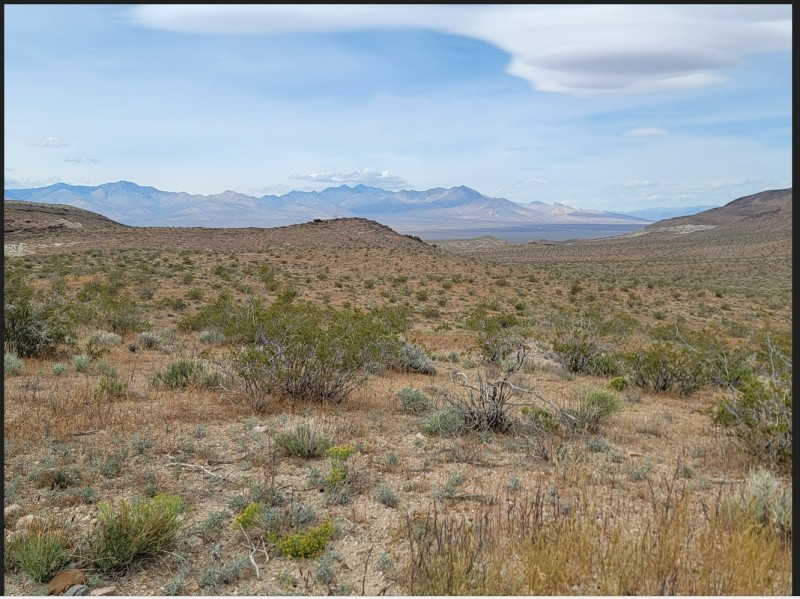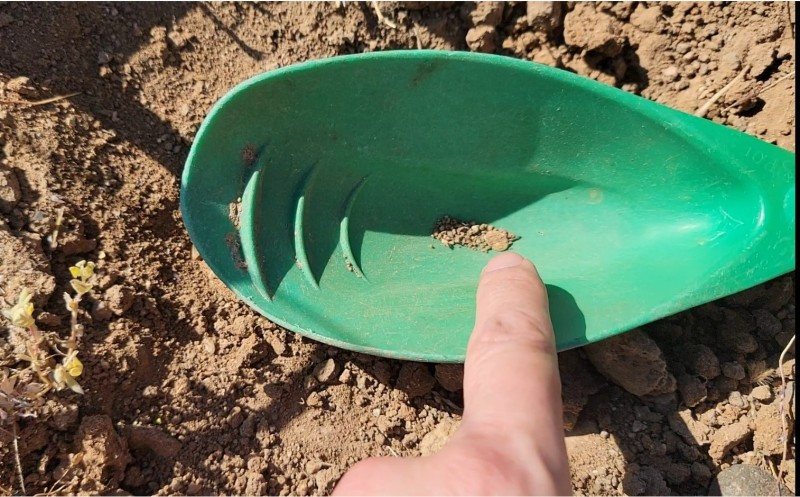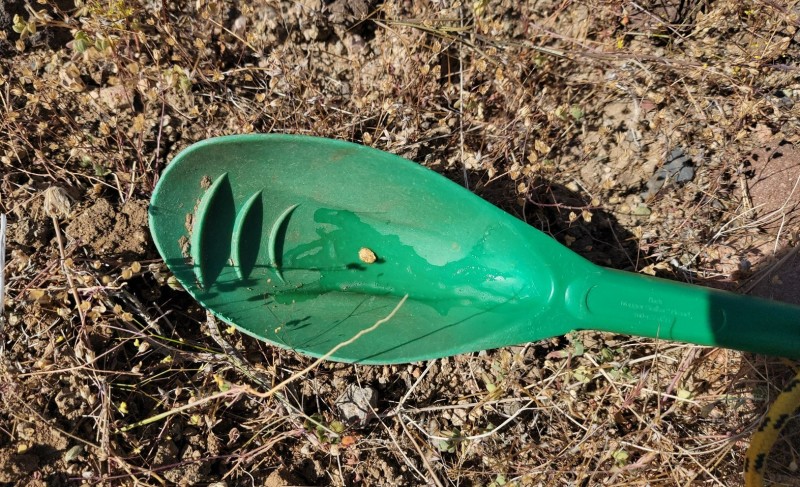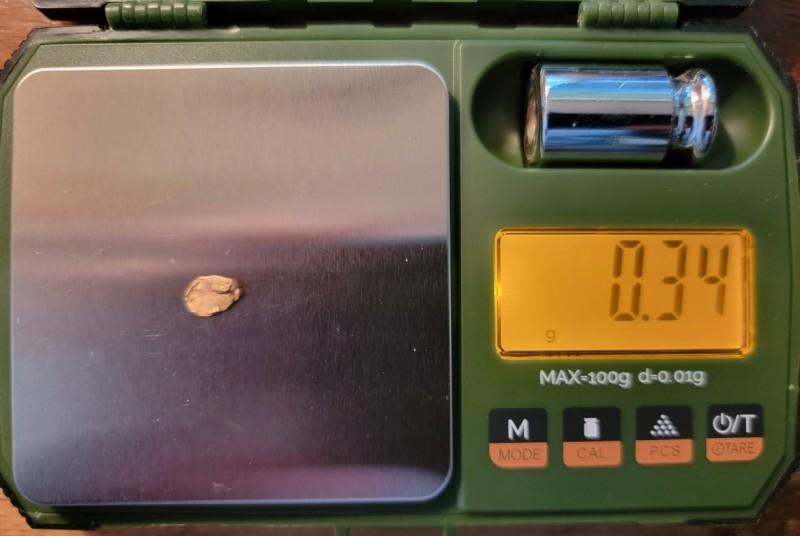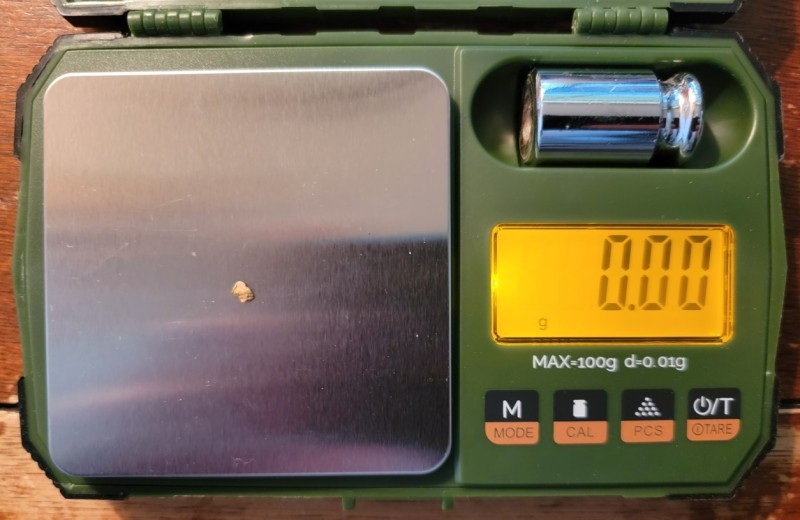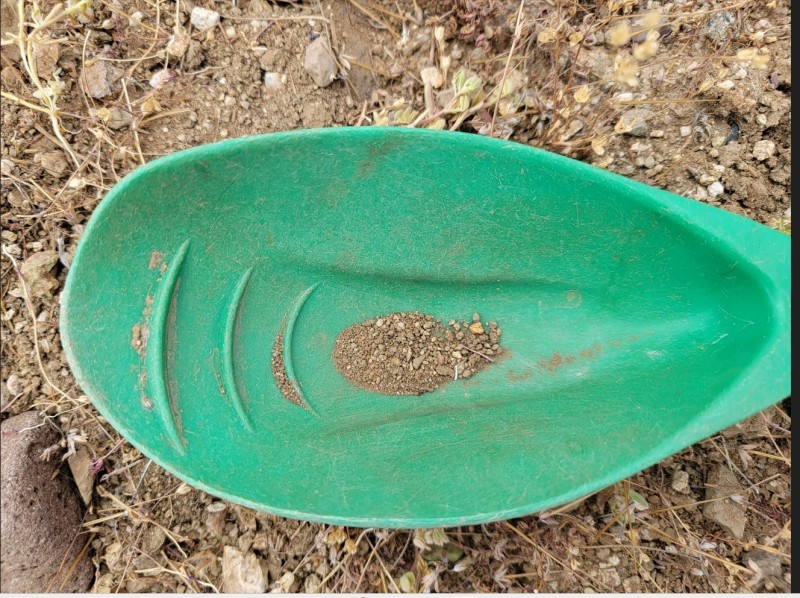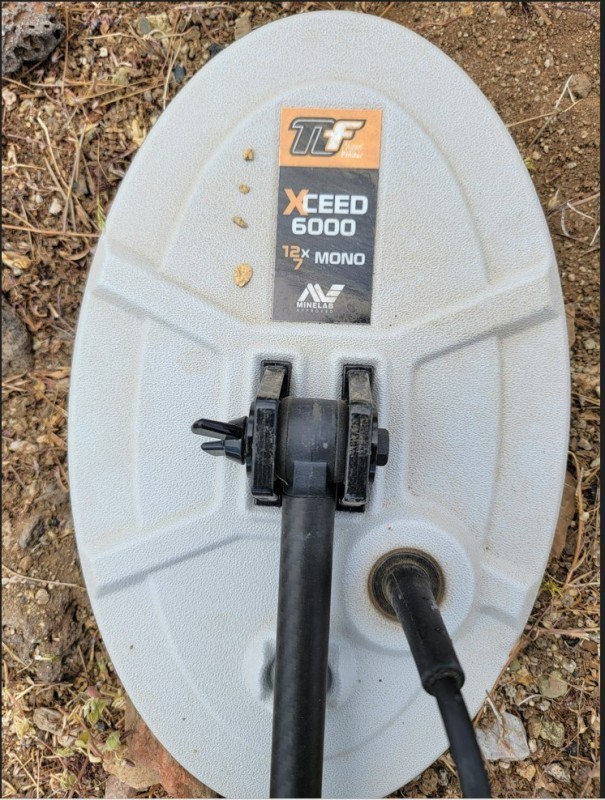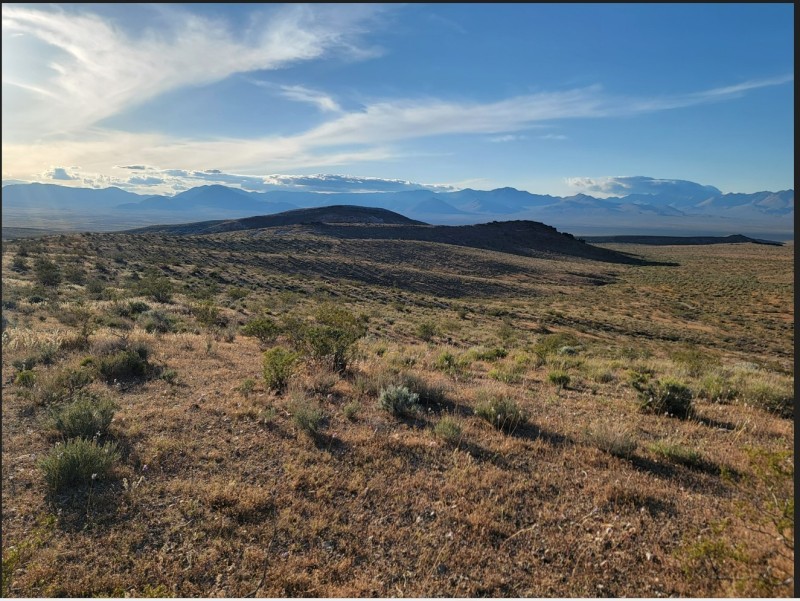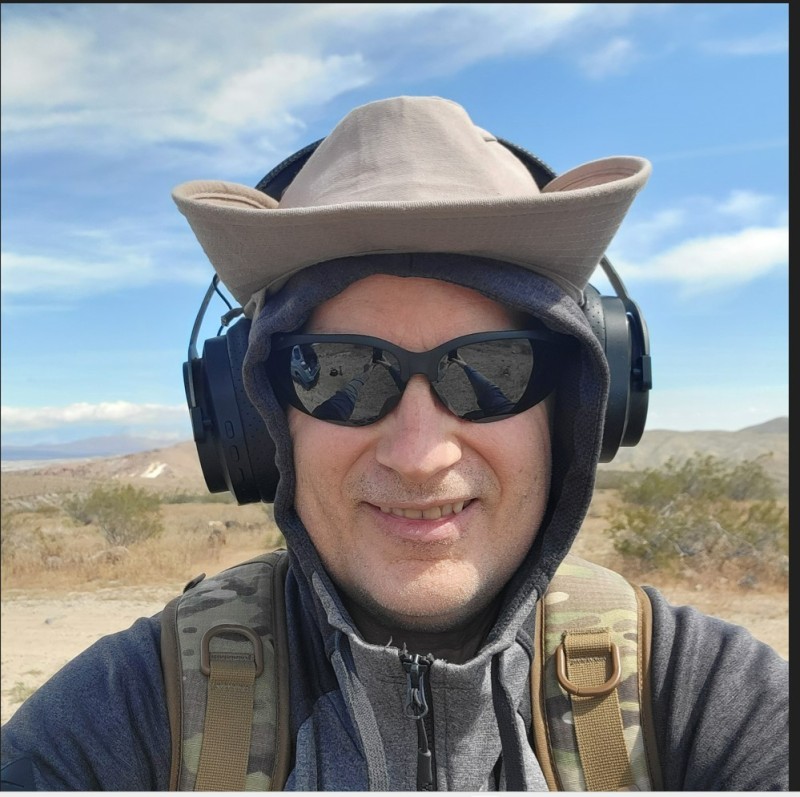-
Posts
1,369 -
Joined
-
Last visited
-
Days Won
4
Content Type
Forums
Detector Prospector Home
Detector Database
Downloads
Everything posted by Gold Catcher
-
Looking At These Golden Triangles!
Gold Catcher replied to mn90403's topic in Detector Prospector Forum
I always knew I am doing something wrong -
Garrett Axiom Vs Minelab 6000
Gold Catcher replied to Dain Blackburn's topic in Detector Prospector Forum
ZVT is a genuine ML invention and its underlying technology likely covered by patents with many years of coverage. So, I don't see how anyone could make a GPZ/ ZVT successor, other than ML itself. One thing to say about ML is that they have driven innovation in the detector technology like no other. If a competitor would want to truly match or even displace ZVT performance with their own high-end detector it would have to come up with a truly innovative and differentiated technology, just what ZVT has been for ML, or perhaps Geosense if you believe in it. And not just reformatting technology that was already existing or for which patents had already expired (not referring to a particular company here, just saying in general). Do other brands have the same R&D engine as ML is having? Perhaps. But I believe it when I see it. GC -
Garrett Axiom Vs Minelab 6000
Gold Catcher replied to Dain Blackburn's topic in Detector Prospector Forum
How would you rate the PI discrimination compared to VLF discrimination? I always thought that if discrimination at all then better with VLF. GC -
Garrett Axiom Vs Minelab 6000
Gold Catcher replied to Dain Blackburn's topic in Detector Prospector Forum
Good point, this could indeed explain it. Would love to see that X-ray. GC -
Garrett Axiom Vs Minelab 6000
Gold Catcher replied to Dain Blackburn's topic in Detector Prospector Forum
It is totally ok to have different viewpoints on this topic. I enjoy the 6000 for what it is, and its automation does not bother me that much for what I use the detector for. I would like to know though how much of that "bad" automation really remains in manual mode, and whether it is the Geosense itself that does these "opaque" adjustments, or whether it is the Auto feature that does most of it when switched on. Either way, the 6k remains a fun, lightweight and ultrasensitive detector that does the job of finding small gold in shallow to medium depth ground better than any other detector I have ever used. Would I wish it had more options, like manual GB or volume adjustment (ala GPZ), of course. But then I also have the GPZ which I use equally often and that has all that, so I can choose which detector to use for what suits me best for the day. I remain of the opinion that the 17 inch retains much of the sensitivity of the 11 inch (perhaps 70-80%?), with roughly the same depth focus which is very unusual for this coil size. So, IMHO the focus of this coil is ground coverage but not so much depth. I remember JP (where is he?) reporting the same when he tested it. But I do realize that we all have different experiences with it, depending perhaps also on settings used, ground conditions and gold type. I am actually not often using the 17 inch as I prefer the smaller NF 12 x 7 as my to-go coil for areas where I use the 6000 the most. For bigger open ground I mostly use the GPZ anyhow. Back on topic though, the Axiom does appear to handle hot ground better, albeit some loss in sensitivity compared to the gpx. At least this is what I hear fairly often firsthand. To what extend this would be a game changer will depend on the individual user, but without a doubt the Axiom is the best non-ML detector out there with its own strengths and with features the 6000 clearly does not have, making it the more versatile of the two. Disclaimer, I don't own the Axiom, but this is the feedback I hear from operators who are using both. GC -
Garrett Axiom Vs Minelab 6000
Gold Catcher replied to Dain Blackburn's topic in Detector Prospector Forum
Running in manual will avoid the auto adjustments and you always remain in full control. I often run at full manual max and only go to auto if I run into issues, kind of as my first line of defense. Both NF and Coiltek coils run more stable at full gain than the mono stock coils. The 17 inch is great for ground coverage albeit a bit unbalanced. But still practically no sensitivity loss compared to the 11, however only with marginal depth gain IMO. Overall, a great choice for most conditions. Re new gpz, this might take a while and I won't jump the gun with the first production series, given the track record of the 6000. So, at the earliest this would be late 2024 for me for the new gpz if it were to be released late this year. The axiom is tempting and i still consider getting it too. GC -
Garrett Axiom Vs Minelab 6000
Gold Catcher replied to Dain Blackburn's topic in Detector Prospector Forum
I think Steve summed it up nicely. You should have your answer, Mitchel. GC -
Great topic, Gerry, this one never gets old. VLF disc certainly has improved over the years, but you need to be very mindful of when and how to use it. Experienced detectorists like you know when to use it sucessfully. But many less experienced operators abuse it to an extent where they miss most if not all gold. The large gold specimens that you show are probably not representative of what most people usually find in the field when they go on their club claims, and small(er) gold in mineralized ground are mostly missed when using discrimination. Also, depth is detrimental to discrimination as I am sure you know. Countless times I have recoverd small gold nuggets that read as ferreous on the meter, in particular when encased in iron rich soil. So, IMO discrimination is generally not a good strategy, with exception of certain circumstances where it can come in handy. But it takes experience and knowledge to use it properly. But for more serious gold nugget hunting, in particular at the detecting edge, discrimination is totally useless, and this is the reason why none of the high end modern ML gold detectors even offer that feature. Witout a doubt you know all this, so I am speaking more to the newcomers who might not be familiar with the technical limitations of discrimination, in particular when gold nugget shooting. GC
- 22 replies
-
- 6
-

-
- advice and tips
- gold found
-
(and 1 more)
Tagged with:
-
I briefly shake the scoop as it where a gold pan before leading it over the coil. Can make a big difference for small targets. For a small scoop and gold detecting that is. GC
-
A Day With The GPX 6000 Nf 12 X 7
Gold Catcher replied to Gold Catcher's topic in Detector Prospector Forum
Thank you, Mitchel. You and I share the same passion for the desert landscape. Good luck with your 4runner repairs. I thought they would never break down....Looking forward catching up again. GC -
A Day With The GPX 6000 Nf 12 X 7
Gold Catcher replied to Gold Catcher's topic in Detector Prospector Forum
Hi Glacialgold, yes I can do that when extending the muffs all the way down. I have no small head, but it works 🙂 GC -
A Day With The GPX 6000 Nf 12 X 7
Gold Catcher replied to Gold Catcher's topic in Detector Prospector Forum
Thanks, Simon. And yes, I absolutely give you that. You were right, and I was hesitant and not quite believing. I think part of that was my fear to ship it off, considering how many packages I got lost. I did insure it on the way to the repair center, but the return was without insurance, just with a tracking number. Well, thank God it worked out and I am glad I did! Yup, I guess I was a bit spoiled with my GPZ that usually only finds stuff that registers with double digits after the gram. Had I used the GPZ I might have only found the "bigger" one that day, which I am sure was just plain missed (including by me!!). 🙂 I mean I have of course found super small stuff with the GPZ as well, but not with the consistency of the 6k, that seems to find the small stuff all the time. You can of course ask the question (and some do) whether it is worthwhile to dig all that small stuff the 6k will find. In particular, because you can't often times tell by the signal response if something is tiny or bigger, since all sounds pretty loud. But on the other hand, I personally enjoy digging all gold, even that which won't register. But this is because I don't have to pay my bills from it. I think if you wanted to make the most efficient time/gold weight ratio then the 6k might not necessarily be your detector...The scale you ordered looks great. Did you get it on AMZ? Totally agree, the GPS on the GPZ is not very accurate most of the times. I usually do the waypoint averaging on my Garmin GPSMAP 66i, then I transfer it to my Basecamp map. I have a "gold map" of the area I usually go to, but I wish I could make any sense of it as it all appears to be scattered without any predictability. But I am still hoping it will give me some cluses eventually. GC -
So, I went back to a club claim that had been pounded for years with virtually all detectors imaginable, including countless times with the GPZ 7000, and that was essentially left for dead. It was a beautiful day, around 60 degrees but with fairly strong winds. There was not a soul out there, something that made the majestic landscape even more impressive. I decided to use my GPX 6000 with the NF 12 x 7 and to do some slow scanning of an area where I recovered quite some gold over the years (mostly by using the GPZ). My settings were: Auto +, normal, threshold on, with ML headset. I was pleasantly surprised how stable the machine was with these settings, something I would not have expected in this area. I should mention that I did the audio fix as well, which I now believe contributes for sure to the overall improved stability of the detector, even when just using BT. One of my first targets was a thin flat piece that was obviously pounded by the force of moving mass including lava rocks. Always nice to see it at first all dirty in the scoop, a feeling of joy that never seems to go away, doesn’t matter how many nuggets you have found before, small or large. After some "spit cleaning", the shiny yellow came out. I am actually surprised that this nugget was not picked up previously. I would certainly expect that most detectors would have been able to see it, also considering that it was fairly shallow, about 2-3 inch deep. So, the day started good, and I continued to scan the close vicinity around my initial find. One thing that I noticed was how incredible sensitive the machine is, something that I was of course aware of having used the 6000 quite a bit, but that again came to my attention. One challenge is that the whole area is littered with bird shots, and I must have recovered at least 20-30 within just a few hours. This is clearly less of a problem with the GPZ 7000, even when run at full bore. I then decided to change tactics and once a target was heard to remove about 1 inch of surface material with my Hermit pick (one end with wide blade), and to only recover if the target would then still be there. This actually worked quite well, and my next “piece” was a super small, tiny flake at about 2-3-inch depth. The flake was so tiny that it was almost impossible to pick it up with the fingers, and of course it did not register on the scale. But the fact that the 6000/NF12 x7 picked it up with a clear high/low signal at about 2-3-inch depth is truly remarkable, and shows once more the power of the 6000, combined with the excellent performance of the NF 12x7 coil. Would the 11-inch stock or the Coiltek 9-round have picked it up, perhaps. But I did not make a cross comparison of all three coils, as I wanted to focus on detecting. But I really have to say I am super impressed by the NF12x7. It is highly sensitive, not a bit less than the 11 stock, but with a more balanced response signal, smoother and it also appears more stable. All targets that I recovered that day were high/low signals, with only some hot rocks or areas of high mineralization giving a low/hi response. I picked up two more pieces, always by using the “1-inch scrape/discard technique”, something that really worked well for me and that I can recommend using for bird shot infested areas. Can you see the one in the next pic? 😊 I picked up four in total that afternoon, and I am sure there is more on this claim, considering that I only focused on a small area around my initial nugget and thoroughly scanned only in the close vicinity. Overall, a great day in the desert. There is something magic about being out there, and every time I come back from it I feel I have been on a meditative retreat. Finding gold is an added bonus to me, and even without any I enjoy my trips every time! Here is the general area where I hang out. Go get some. 😉 So long, guys! GC
-
A New California Gold Rush
Gold Catcher replied to TampaBayBrad's topic in Detector Prospector Forum
River streams have a large body of water compared to the river bed (floor), so the moving mass is mostly water. In alluvial fans, you have a much higher ratio of solid matter that moves along with the water, hence the overall density that moves in these fans is much higher. This also results in heavier rocks (including gold) being pushed up as the mass is moving. This is what makes alluvial fans so attractive for prospecting, in particular at the Apex widening, because the heavier stuff moves up and not down. You can easily see that yourself when you walk up alluvial fans and you notice that larger rocks and heavy material is often "floating" on top of lighter material and sand underneath. There is a lot of studies done about mass movements in alluvial fans, you can also find some of this on youtube. Hope this helps. GC -
A New California Gold Rush
Gold Catcher replied to TampaBayBrad's topic in Detector Prospector Forum
Could not agree more, usually rivers just replenish with fine flood gold, if any. Desert areas are more interesting and replenishing can be more plentiful and with more coarse gold down alluvial fans at the apex widening after strong floods. This has to do with the density of the material that is moving, and water alone (rivers) has the least density (1), hence mostly just flakes. Headding to the desert tomorrow. 🤪 GC -
The 12x7 Xceed is a phenomenal coil. More stable than the stock 11 but equally sensitive, at least as judged from my first test runs. Air tests should generally be interpreted with caution. The ground processing algorithms will not work well with air tests and can lead to false interpretations when coils are being compared. Btw, kind of odd treshold sound. GC
-
Nugget Finder 17" X 13" Z Search GPZ 7000 Coil
Gold Catcher replied to cobill's topic in Detector Prospector Forum
Still thinking of getting the 17x13. Thus far, I like the 12-Zsearch as it strives a great balance between weight, stability and depth. Re settings, no rules exist that fit all needs. I have areas where general/difficult hears nuggets that HY/normal does not. The best thing to do is to adjust settings based on the ground/environment conditions, rather than sticking to always the same. I have done this mistake before. This is part of using your machine effectively, and why I like the options the GPZ has to offer. GC -
Gold Monster Vs 24K Vs Gold Bug 2 Or...........
Gold Catcher replied to Steve Herschbach's topic in Detector Prospector Forum
I rarely use VLFs anymore, but if the conditions are right nothing beats the GB2. The problem is just that the conditions are mostly not right for it, at least not in my neck of the woods. The GB2 comes with a serious side effect though: The aweful screeching treshold has been burned into my brain after having used it for so long over years, and I am convinced that this will be the last thing my brain will hear on my death bed. GC -
Little San Domingo Wash Hunt GPX 6000
Gold Catcher replied to Jeff McClendon's topic in Detector Prospector Forum
Hi Lynk, the 9 inch coiltek runs smoother than the 11 stock, at least that has been my experience thus far. I also just got the NF 12x7, will make a comparison soon. GC -
I wonder how many people are there now.... GC
-
The MPF timings of the SDC is well suited for shallow small gold in heavy mineralized hotrock grounds. IMO the 6k is not a replacement for the SDC and is less good in grounds where the SDC shines. The hotrock sensitivity of the 6k can be anoying at times. But the 6k is by far beating the SDC in most other circumstances. But the 6k is much less robust and sturdy. The SDC is for the rough and can take beatings without problem. GC
-
I am with you oneguy. The SDC is for sure clunky and heavy for what it is, but it is a beast and made for tough. It's my ML companion for hikes into canyons and nothting else comes close to it. My hope is that they will release a new version soon, perhaps together with the 8000... Trying to save money now for a potential dual pack 🤠 GC
-
Excellent, Norvic. This is a great device. I am using the gpsmap 66i (now there is a newer 67i). It combines iridium sat 2 way communication with all the map features and basecamp compatibility that the explorer sereis did not have. Can't go wrong with Garmin, but the manuals are not good and alot you need to find out by trying/ intuition. The good news is that there are a lot of youtube reviews that explain in details, no need to read manuals 😁 GC
-
It comes down to PI vs ZVT technology. ZVT has several advantages that can't be met by any PI, doesn't matter who makes it or how advanced it may be (6000, Axiom, etc). A modernized ZVT with better/faster processing time combined with light(er) weight and coil options would do it for me. Oh yes, and please a better screen, not the 50c one they have on now. GC



